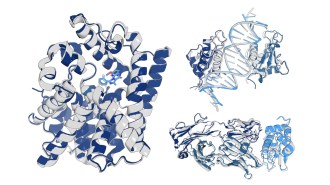- More than 2 years ago
To identify a particularly good olive oil, connoisseurs take a slurp and wait for a curious burning sensation in the throat. In a new study, researchers uncover the reason for this odd practice: Sensor molecules found mainly in the human throat — but not the mouth — latch on to a chemical found in superior olive oils. The results provide a scientific basis for the age-old custom of rating superlative extra-virgin olive oils on a scale of one, two or three coughs.
“When you can come up with a very clear and simple explanation for something like this, it’s really gratifying,” says neuroscientist Craig Montell of the Johns Hopkins School of Medicine in Baltimore, who was not involved in the study.
The new study, published January 19 in the Journal of Neuroscience, may also lead to a better understanding of inflammation-fighting drugs; extra-virgin olive oil’s cough-eliciting compound, oleocanthal, fights inflammation. Ibuprofen, which elicits a similar throat burn when chewed up and swallowed, binds this same oleocanthal-sensing molecule, the researchers found.
The idea to study olive oil came to study coauthor Gary Beauchamp about 10 years ago, while he was at a meeting in Italy on molecular gastronomy, an emerging field studying the physics and chemistry of cooking. Some physicist friends had brought some freshly pressed extra-virgin olive oil to taste. A sip created a “very odd sensation,” says Beauchamp, who is the director of the Monell Chemical Senses Center in Philadelphia. “It’s got this burn in the throat, but not in the mouth.”
Just how oleocanthal bypasses the mouth and hits the throat wasn’t clear until Beauchamp and his colleagues focused on a flavor-sensing molecule called TRPA1 that reacts to noxious pollutants and chemicals found in foods such as wasabi, mustard and garlic.
The new study adds oleocanthal to that list. The TRPA1 receptor showed a jolt of activity when hit with oleocanthal.
The next step was pinpointing the location of TRPA1 in the body. Tissue biopsies taken from volunteers showed that TRPA1 was mostly absent from mouth and tongue tissue, but abundant in the upper throat (and nose). “That was a big surprise,” Beauchamp says.
Other noxious chemicals are likely sensed by several kinds of receptors, but oleocanthal appears to be detected only by TRPA1. The throat-heavy distribution of the sensor molecule likely explains why people feel oleocanthal there. (Beauchamp notes that if one were to snort olive oil, the pungency might be sensed in the nose, too.)
TRPA1 also senses chemically-unrelated ibuprofen, the team found. Uncovering this intriguing correlation between two diverse inflammation fighters, Beauchamp says, might ultimately lead to insights on better anti-inflammatory drugs.






